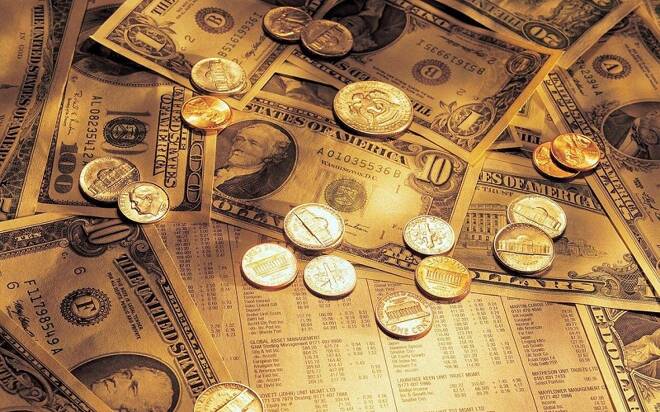Advertisement
Advertisement
Trading the U.S. Dollar – Miss a Little, Miss a Lot
By:
Trading the index by itself works great when geopolitical risk is limited and all you have to watch is the spread between U.S. Treasury yields and the rest of the world. However, this isn't happening in the Forex markets at this time.
In the wake of the volatility-driven price action this week due to the reaction to the political turmoil in Italy. Here’s a few things to consider to make life a little easier as a trader. Too often it’s easy to just react to a headline than to really understand the finer points about the actual catalyst in the market. I see this often in the Forex markets when the headlines merely read, “The Dollar is Up” or “The Dollar is Down”.
Too often many opportunities are missed when choosing to trade the U.S. Dollar Index over the individual currencies. Whether you choose to trade the index or Forex pair is a personal preference and nobody should tell you what to do, but as often the case, the movement in interest rates should dictate whether you choose to trade one over the other.
Personally, I find it easier to move from interest rates to the dollar then to just try to trade the dollar index on its own merit. After all, contrary to what you may think, the U.S. Dollar Index is merely a reflection of the Euro. It is not an equally weighted index. So when the Euro goes, so goes the U.S. Dollar Index.
Trading the index by itself works great when geopolitical risk is limited and all you have to watch is the spread between U.S. Treasury yields and the rest of the world. Essentially, money seeks its highest level so if the interest rate differential widens between U.S. Treasurys and another foreign debt instrument like Japanese Government Bonds in favor of the U.S. then money will likely flow into the U.S. Dollar, making it a more attractive asset.
We’ve witnessed this phenomenon recently when geopolitical risks cooled and the divergence between the monetary policies of the hawkish Federal Reserve and the other dovish central banks made the U.S. Dollar a more desirable investment.
When geopolitical risk returned last week with President Trump expressing disappointment in the U.S.-China trade negotiations, his cancelation of the meeting with North Korea and the political turmoil in Italy, the U.S. Dollar Index continued to strengthen. However, while the index rose, it didn’t really reflect all that was going on in the Forex market.
The Fed also made headlines last week when it released dovish Fed minutes from its May Monetary Policy meeting.
What Is Actually Happening
Earlier today I saw a headline that said the “U.S. Dollar is on Fire”. I thought this was funny because from my standpoint, it was the Euro that seemed to be on fire. The dollar seemed cool as a cucumber. I think the writer meant the U.S. Dollar Index is firing on all cylinders, having hit a multi-month high the day before.
The Euro makes up about 57% of the U.S. Dollar Index so it essentially controls the movement in the index. While the index was soaring to multi-month highs because of the weaker U.S. Dollar, traders may have been missing a huge sell-off in the USD/JPY in reaction to a steep drop in U.S. Treasury yields.
Furthermore, if you ask the analyst on the street, “how is the U.S. dollar?” he’ll probably tell you it’s stronger, but in reality, its strong against the Euro because of the political uncertainty in Italy, but weak against the Japanese Yen due to falling U.S. Treasury yields. In fact, if you checked the charts today, you’d see that the USD/JPY is actually trading lower for the month, while the AUD/USD is trading higher.
So if you ask me what is actually happening with the U.S. Dollar, I would have to say it all depends on the catalyst you are watching. If you want to follow the events in Italy then trade the Euro. If you want to use the direction of Treasury yields as your catalyst then trade the Japanese Yen.
While the Dollar Index is a good market to trade when everything is pointed in the right direction, I think you cheat yourself out of better opportunities if you ignore the movement in the individual currencies. Furthermore, I also think you expose yourself to more risk.
About the Author
James Hyerczykauthor
James Hyerczyk is a U.S. based seasoned technical analyst and educator with over 40 years of experience in market analysis and trading, specializing in chart patterns and price movement. He is the author of two books on technical analysis and has a background in both futures and stock markets.
Advertisement
